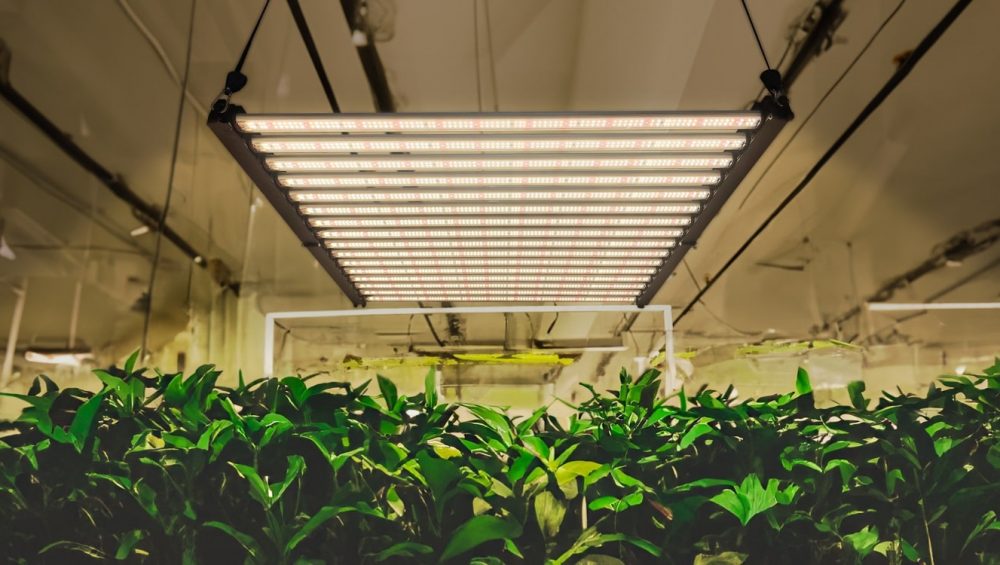Do Plants Use Green Light?
Absorption Spectrum vs Action Spectrum
Introduction
When most people think about LEDs being used for horticulture lighting, the first thing that comes to mind is a purple glow being emitted from a fixture consisting of red and blue diodes. This purple glow may be the industry standard for horticulture LEDs, but have you ever wondered why red and blue diodes have historically been the semiconductors of choice by lighting manufacturers? Many manufacturers reference the absorption spectrum of chlorophyll a and b (which peaks in the blue and red regions of the electromagnetic spectrum) as the main reason for providing a purple spectrum

At first glance, this seems legitimate since chlorophyll drives photosynthesis after all, but have you considered how the absorption spectrum of chlorophyll is measured? Additionally, have you considered if the absorption spectrum of chlorophyll directly correlates to photosynthesis and plant growth, and what happens if you only target a sole pigment and neglect other pigments responsible for plant growth and development? This article will discuss the differences between absorption spectrum and action spectrum, and (spoiler alert) dispel the myth that “plants don’t utilize green light” to promote plant growth and development.
Action Spectrum
The action spectrum of photosynthesis was created from research that was performed in the 1970s by Drs. McCree and Inada and this work was fundamental in defining the range of photosynthetically active radiation (PAR). Prior to this research, very little work had been performed to determine how varying wavelengths of light influenced photosynthesis and plant growth. These researchers utilized filters to create monochromatic wavebands to determine the influence of light spectra on photosynthesis of single leaves using an assimilation chamber. If you see figure 2, you will notice that plants do in fact utilize green light for photosynthesis, quite efficiently in fact

So why is there such a difference between the absorption spectrum and the action spectrum if chlorophyll is responsible for photosynthesis? The answer is simple: Chlorophylls are not the only photoreceptors that are responsible for photosynthesis. There are other types of antenna photoreceptors (mainly carotenoids) which also promote photosynthesis, and by utilizing narrow band red/blue LEDs in sole-source lighting conditions these pigments are not able to optimize their light harvesting capabilities. Also, it should be noted that green light does in fact promote photosynthesis in chlorophylls, quite efficiently in fact. Recent work has shown that green light is able to penetrate deeper into leaf surfaces to drive photosynthesis in chloroplast located towards the bottom surface of the leaf, in fact, more efficiently than red light at high PPFD. As PPFD increases, light energy that is absorbed in the upper chloroplasts tends to be dissipated as heat, while penetrating green light increases photosynthesis by exciting chloroplasts located deep in the mesophyll (Terashima et. al., 2009). Additionally, green light penetrates through leaf surfaces much better than red or blue light to reach the lower canopy, which is extremely important in dense canopy production techniques which are common in controlled environment agriculture.
Conclusion
So, what does this all mean for the grower? While we are still in the early-stages of understanding how plants use light and we are still working to understand how different photoreceptors function and interact with one another, the bottom line is that plants absolutely do utilize green light. If your horticulture lighting system is delivering a spectrum which neglects photoreceptors that absorb light in the 500-600 nm region (especially in sole-source lighting applications) you will not be optimizing your growing environment. Click here if you would like to learn more about the spectra that Fluence Bioengineering includes in their lighting fixtures.







2 thoughts on “Do Plants Use Green Light?”
I really like what you guys are usually up too.
This type of clever work and coverage! Keep up the terrific works guys I’ve added you
guys to my personal blogroll.
Hello! I could have sworn I’ve been to this website before but
after going through a few of the articles I realized it’s new to me.
Regardless, I’m certainly delighted I found it and I’ll
be book-marking it and checking back often!